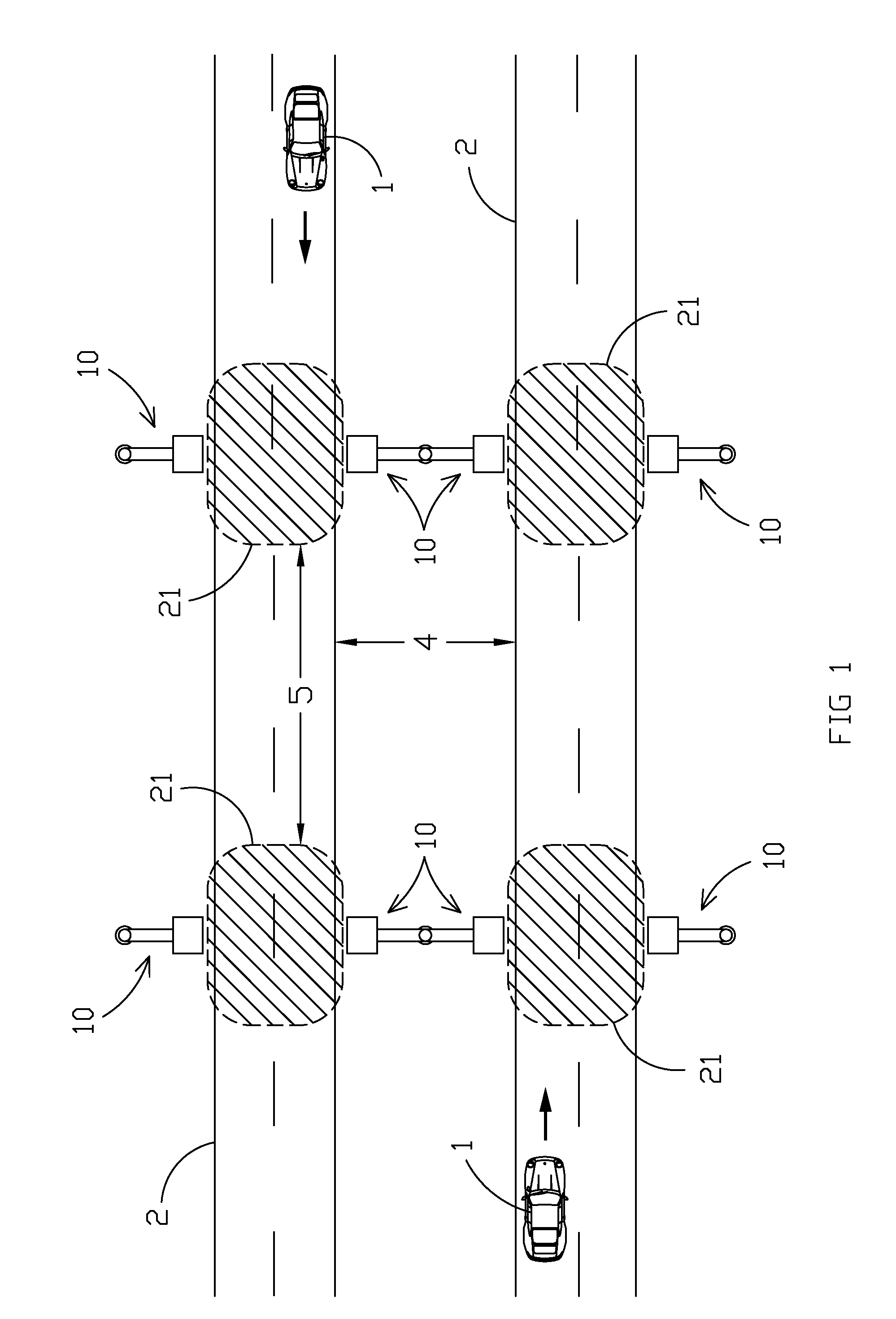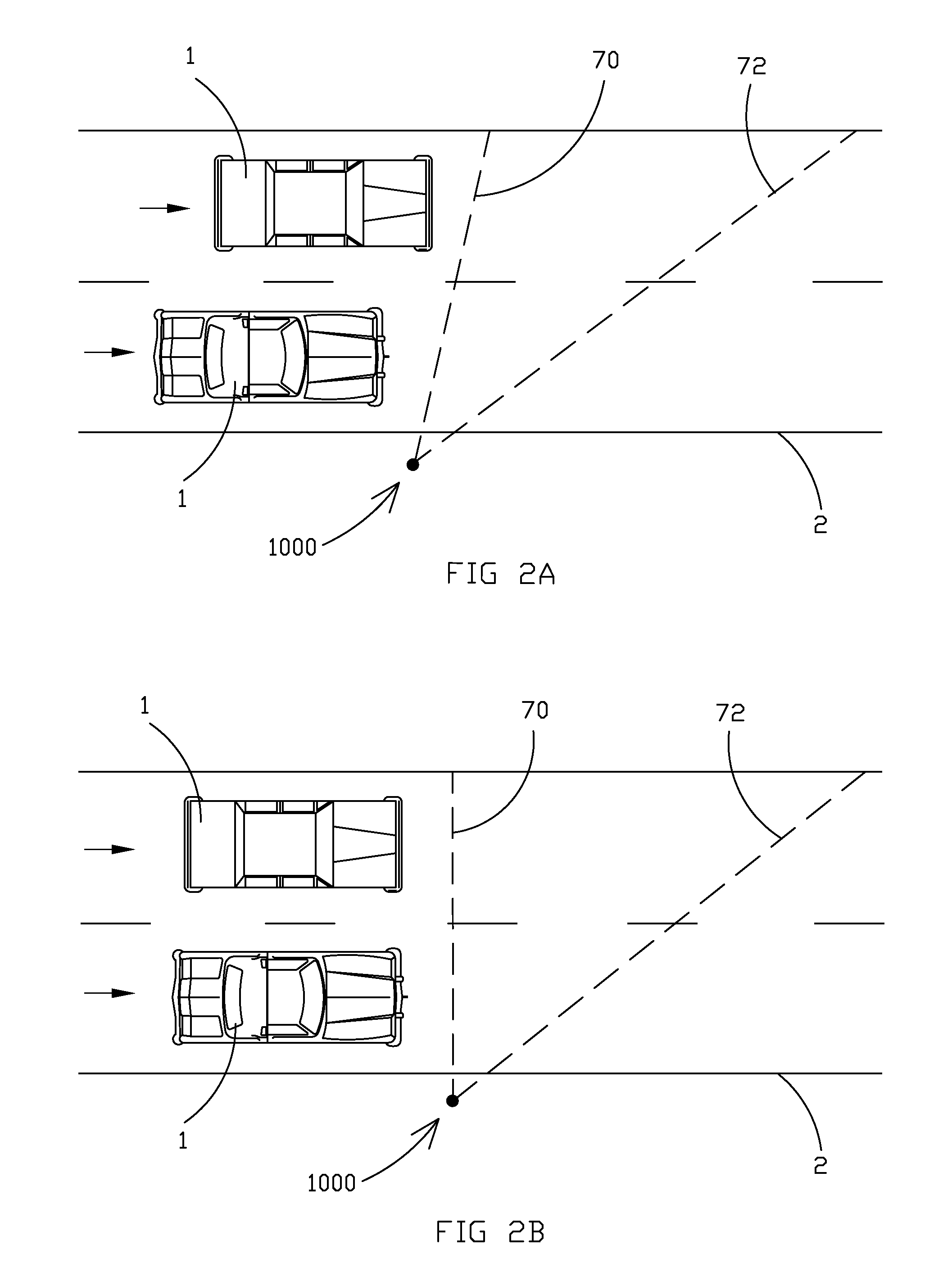Apparatus, method, and system for roadway lighting using solid-state light sources
a technology of solid-state light sources and apparatuses, applied in the direction of condensers, instruments, lighting support devices, etc., can solve the problems of limiting the effectiveness of responding to changing driving conditions and limited in the selection of color properties
- Summary
- Abstract
- Description
- Claims
- Application Information
AI Technical Summary
Benefits of technology
Problems solved by technology
Method used
Image
Examples
embodiment i
B. Exemplary Method and Apparatus Embodiment I
[0041]A more specific exemplary embodiment, utilizing aspects of the generalized example described above, will now be described. The present embodiment utilizes concepts of adjusting how light is aimed in the horizontal plane; of course, this does not preclude adjusting light in the vertical plane as well.
[0042]FIG. 4A illustrates the general roadway scenario previously described in which a vehicle 1 travels along a roadway 2; is of note that as illustrated travel in both lanes on either side of median 4 is in the same direction and indicated by arrows. As envisioned, fixtures 100 are aimed so to project light generally forward of vehicle 1 as previously described for fixtures 1000 (and illustrated in FIGS. 2A and B). The spacing between fixtures 100 approximates that of current roadway lighting fixtures (e.g., on the order of 60-80 meters), but because light is directed with traffic the mounting height is greatly reduced (e.g., reduced ...
embodiment 2
C. Exemplary Method and Apparatus Embodiment 2
[0050]An alternative embodiment envisions a roadway lighting system which utilizes concepts of adjusting how light is aimed in the vertical plane; of course, this does not preclude adjusting light in the horizontal plane as well.
[0051]FIG. 5A illustrates a general roadway scenario in which four lanes of traffic flow across a bridge, two lanes in each direction in accordance with vehicles 1 and arrows projecting therefrom. As envisioned, fixtures 200 are affixed to existing guardrails on the bridge, primarily to eliminate the cost of a support structure; this is achieved via a bracket 203 and support arm 207 (see FIGS. 5B-D). As designed, bolts 204 extend through aperture 205 in bracket 203 and aperture 206 in arm 207 and are secured by a nut or analogous component (not illustrated). Arm 207 is fixed to fixture 200 (e.g., by bolts 216 and / or other methods including but not limited to screws, rivets, welding, and adhesives). Aperture 206 i...
PUM
| Property | Measurement | Unit |
|---|---|---|
| height | aaaaa | aaaaa |
| height | aaaaa | aaaaa |
| angle | aaaaa | aaaaa |
Abstract
Description
Claims
Application Information
 Login to View More
Login to View More - R&D
- Intellectual Property
- Life Sciences
- Materials
- Tech Scout
- Unparalleled Data Quality
- Higher Quality Content
- 60% Fewer Hallucinations
Browse by: Latest US Patents, China's latest patents, Technical Efficacy Thesaurus, Application Domain, Technology Topic, Popular Technical Reports.
© 2025 PatSnap. All rights reserved.Legal|Privacy policy|Modern Slavery Act Transparency Statement|Sitemap|About US| Contact US: help@patsnap.com



